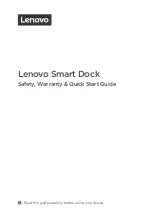
64
Note:
—
If „Sunny“ is displayed at night, this means a starlit night.
—
The „Snowfall“ display appears instead of „rain“ when the outside temperature
is below 0 °C (temperature measured over outdoor sensor „1“, which therefore
should not be in a basement room but outside!).
—
The display does not represent the momentary weather situation, but is a
forecast for the next 12 to 24 hours.
—
The calculation of the weather forecast only based on the barometric pressure
only results in a maximum accuracy of about 70%. The actual weather at the
next day may be completely different. Since the barometric pressure measured
only applies for an area with a diameter of approx. 50 km, the weather may also
change quickly. This particularly applies in mountain or high mountain areas.
Therefore, do not rely on the weather station’s forecast but gather information
on site, e.g. for mountain tours.
—
In case of sudden or larger air pressure fluctuations, the display symbols are
updated to indicate the weather change. If the display symbols do not change,
either the barometric pressure did not change or the change is so slow that it
could not be registered by the weather station.
—
If the weather forecast „Sunny“ or „Rainy“ appears, the display also does not
change when the weather turns better (display „Sunny“) or worse (display
„Rain“), as the display symbols already show the two extreme situations.
The display symbols indicate a weather change for the better or worse, which
does not have to mean sun or rain, however, as indicated by the symbols.
—
After first insertion of the batteries, disregard the weather forecasts for the
first 12 to 24 hours, because the weather station first has to collect barometric
pressure data in this period at a constant height to make a more exact forecast.
—
If you take the weather station to a place that is significantly lower or higher
than the original site (e.g. from the ground floor to the top stories of a building),
the weather station may interpret this as a weather change.
















































